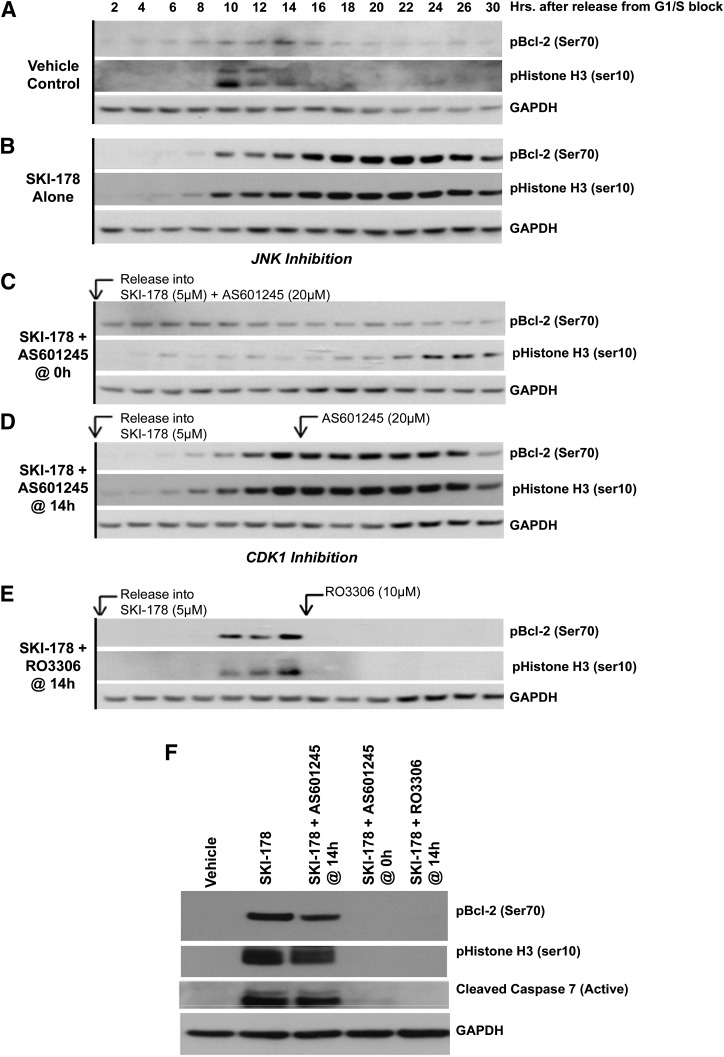Fig. 6.
Inhibition of CDK1 completely abrogates SKI-178–induced Bcl-2 phosphorylation and caspase-7 activation after mitotic arrest. HL-60 cells were synchronized at G1/S phase transition using a double thymidine block and released into either vehicle (A) or SKI-178 (5 μM) (B). Cells released into SKI-178 were subdivided into four additional treatments: (C) HL-60 cells released into SKI-178 and cotreated with AS601245 at the time of release; (D) HL-60 cells released into SKI-178 and cotreated with AS601245 14 hours after release; (E) HL-60 cells released into SKI-178 and cotreated with RO3306 14 hours after release. Whole cell lysates were collected at indicated time points and blot analysis was performed using antibodies for pBcl-2 (Ser70) or pHistone H3 (Ser10). (F) To directly compare pBcl-2 (Ser70), pHistone H3 (Ser10), and caspase cleavage between the various treatments, Western blot analysis was performed using indicated antibodies on the 26-hour time points from (A–E). Glyceraldehyde 3-phosphate dehydrogenase (GAPDH) serves as a loading control. Results shown are representative of at least three independent experiments.

